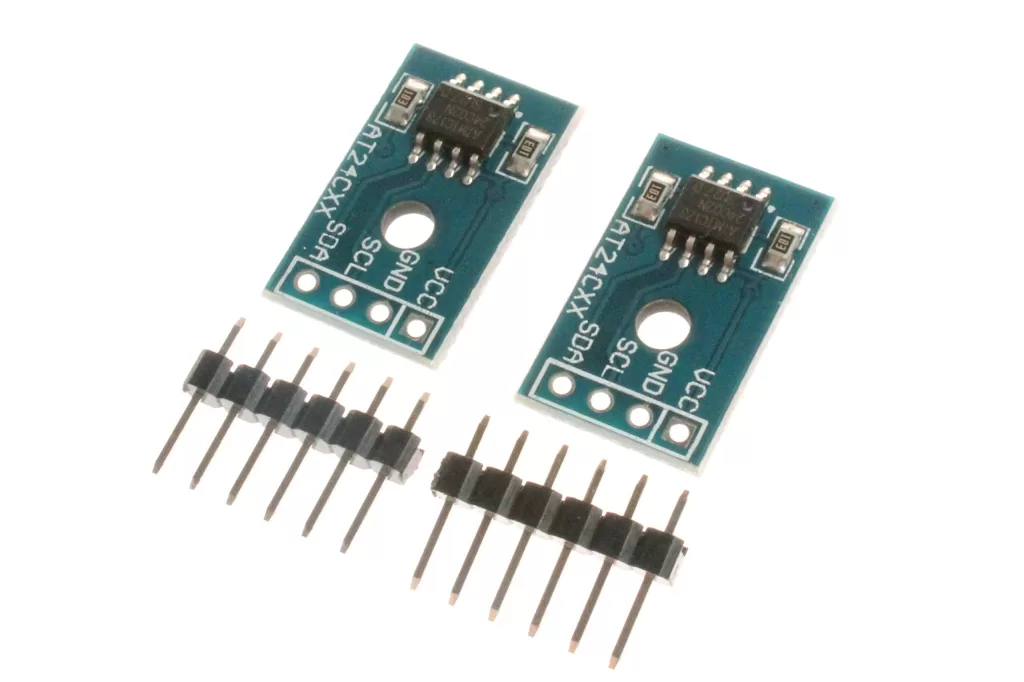
How to choose the right AT24C02 card for your project?
AT24C02 card is a versatile and widely used component in various electronic projects, especially those requiring non-volatile memory to store data. Built around the AT24C02 integrated circuit, these cards can be used in multiple applications, from smart cards and secure access systems to industrial control and consumer electronics, due to their reliability, low power consumption, and ease of integration. However, given the diversity of options available, Dcco will guide you through the critical considerations in this post.
Technical Specifications of AT24C02 Cards
The AT24C02 card is built around the AT24C02 EEPROM and provides 256 storage space, divided into 32 pages of 8 bytes each. This memory is non-volatile and retains stored data even when power is removed. One of the key specifications to consider is the operating voltage range of the AT24C02 card. Typically, these cards operate in a voltage range of 1.7V to 5.5V, which makes them compatible with a wide range of microcontrollers and other digital devices. Another important specification is the I2C communication protocol, which the AT24C02 card uses to interface with other devices. I2C is a widely adopted communication standard that allows multiple devices to communicate using two wires. They also support I2C communication at speeds up to 400 kHz in fast mode.

Evaluating the memory needs of your project using the AT24C02 card
When choosing a project, you must also evaluate your memory needs carefully. First, consider the type and quantity of data you need to store. The AT24C02 card divides its memory into 32 pages containing 8 bytes. This configuration is ideal for storing small amounts of data, such as configuration settings, calibration data, or small text strings. Because you can write to EEPROM memory a limited number of times (typically 1 million times for the AT24C02), projects that require frequent data updates may need careful management of memory usage to avoid wear and tear on specific memory locations. Another factor to consider is the potential for future expansion. Suppose you may need additional memory in the future. In that case, determine whether you can supplement the AT24C02 card with additional memory components or use a different EEPROM model with a larger capacity.

Compatibility and Integration of the AT24C02 Card with Your Project’s Hardware
The first thing to consider is the compatibility of the AT24C02 card with your microcontroller or processing unit. The AT24C02 card uses the I2C protocol for communication, so you must ensure that your microcontroller supports I2C communication and can handle the required data transfer speed. Modern microcontrollers are I2C compatible and can easily interface with the AT24C02 card. However, it would help if you verified this compatibility before selecting.
Another critical factor is the operating voltage of the AT24C02 card. As mentioned earlier, the card typically operates in a voltage range of 1.7V to 5.5V. Voltage fluctuations outside this range may cause the card to malfunction or fail. Their physical size is also a factor to consider while integrating, and you need to choose the card with the available space based on your project design and the space constraints.
Evaluate Cost and Availability
The price range for AT24C02 cards on the market can vary depending on the manufacturer, component quality, and any additional features or customization options. In addition to the initial purchase price, consider the total cost of ownership over the life of the AT24C02 card. This includes integration costs, maintenance costs, and potential replacement costs. For example, a higher quality card with a longer lifespan may cost more upfront, but you can save money by reducing the need for frequent replacement or repairs. Availability is another crucial factor to consider, and ensuring a steady supply of AT24C02 cards is essential to avoid production delays or interruptions. Especially if you plan to purchase in bulk or require continuous delivery, ask about delivery times at the time of purchase.
Ensure long-term support
It is essential to consider the current project needs but also the long-term impact of your choice. Component obsolescence is a common challenge in the electronics industry, and manufacturers may discontinue products or introduce new versions that are not backward compatible. To reduce this risk, choose a manufacturer that provides long-term support for production. Another critical factor is the possibility of future upgrades or changes to the project. As technology develops and project requirements change, you may need to upgrade or expand your system. Therefore, choose an AT24C02 card that is flexible and scalable.
Make the Right Choice for Your Project
From understanding the technical specifications of the AT24C02 card to evaluating your project’s memory requirements, hardware compatibility, long-term support, and more, every aspect plays a critical role in ensuring your project’s success. At DCCO, we specialize in producing high-quality AT24C02 cards designed to meet the needs of manufacturers, developers, and engineers in various industries. Provide the best solution for your project.


